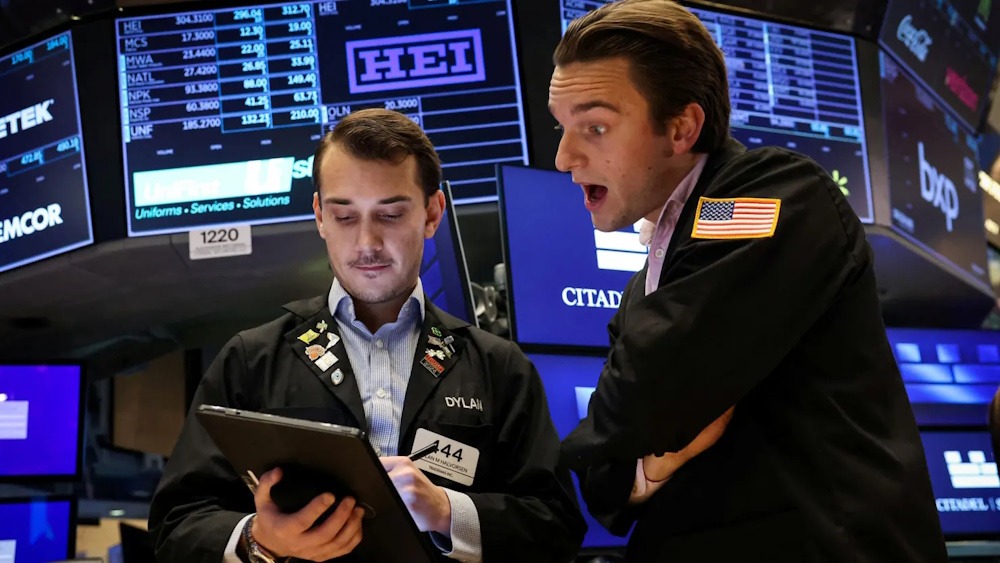
Dow futures increased on Monday, as investors anticipated crucial inflation data later in the week that may influence the direction of forthcoming Federal Reserve interest rate decisions. The S&P 500 futures contract experienced an increase of 13 points, reflecting a rise of 0.2%. Meanwhile, Nasdaq 100 futures saw a gain of 90 points, translating to a 0.4% uptick, and Dow futures moved up by 65 points, corresponding to a 0.1% advance. The publication of August nonfarm payrolls that fell short of expectations, highlighting a persistent deceleration in the U.S. labor market. Nevertheless, the data effectively solidified anticipations that the Federal Reserve will reduce rates by a minimum of 25 basis points during its policy meeting on September 16-17, and even strengthened the argument for a potential half-point cut from the existing range of 4.25% to 4.5%. Despite the decline at the end of the prior week, the benchmark index remains not far from a record peak notched on Thursday. Analysts have observed that September typically exhibits a decline in market sentiment, coinciding with valuations that remain at elevated levels. Uncertainty surrounding President Donald Trump’s aggressive tariffs, a recent increase in government bond yields driven by fiscal concerns, and caution regarding the longevity of the artificial intelligence boom are additional elements that may influence investor behavior in the near term.
In this context, the consumer price index for August emerges as a vital indicator of inflationary dynamics.
Scheduled for release on Thursday, the data is expected to indicate that prices increased at a rate of 2.9% in August, reflecting a modest acceleration from the 2.7% recorded in July. At that level, the Federal Reserve would probably encounter concurrent challenges to both aspects of its dual mandate – optimizing employment and ensuring price stability, characterized by a long-term inflation rate of 2%. This would leave policymakers with the challenging task of addressing a cooling labor market and persistent prices, an economic situation that could risk transitioning into a period characterized by high inflation, sluggish growth, and elevated unemployment. Thus far, officials from the Federal Reserve, including Chair Jerome Powell, have suggested a tendency to prioritize the easing of the labor market over inflation concerns. A reduction in interest rates could theoretically stimulate increased investment and hiring, although this comes with the potential risk of accelerating inflation. The Federal Reserve is currently in a period of silence leading up to its upcoming rate decision next week. Consequently, market participants will rely on previous statements from officials as they seek to navigate the trajectory of interest rates.
On Monday, international politics will take center stage as the French government prepares to conduct a confidence vote regarding Prime Minister Francois Bayrou’s fiscal plan. Should a coalition of opposition parties cast their votes against the government, as is widely expected, Bayrou would be compelled to tender his resignation to French President Emmanuel Macron. France’s government has established ambitious targets for deficit reduction, aiming to decrease the shortfall from 4.6% of gross domestic product next year to 2.8% by 2029. To achieve these objectives, a blend of expenditure reductions and various structural reforms has been suggested, amounting to a total of 43.8 billion euros. The feasibility of the plan remains highly uncertain, as various components, notably the suggested elimination of public holidays, have encountered significant opposition from the electorate. Following Bayrou’s announcement regarding the confidence vote last month, yields on French government bonds surged to their highest levels since March. Last week, the yield on the country’s 30-year sovereign debt increased to a level that has not been observed since June 2009. Yields generally exhibit an inverse relationship with prices.
Over the weekend, political instability in Japan escalated as Prime Minister Shigeru Ishiba announced his resignation as leader of the Liberal Democratic Party. This decision comes just weeks following a significant defeat for the ruling coalition in the upper house elections. Ishiba indicated that his resignation followed Tokyo’s achievement of a trade agreement with the U.S., which will result in comparatively reduced tariffs on Japanese products. His sudden resignation has now created the possibility of a leadership contest in the world’s fourth-largest economy, particularly following the LDP’s loss of its majority in the upper house. The Japanese yen experienced a significant depreciation against the U.S. dollar following Ishiba’s exit, although it subsequently recovered some of its losses. The Nikkei 225 index in Japan experienced a notable increase, whereas the yield on the benchmark 10-year Japanese government bond remained subdued.
Oil prices experienced a notable increase following the agreement by the OPEC+ production group to elevate output at a significantly slower rate compared to earlier this year. Brent futures experienced an increase of 17% to $66.59 per barrel, while U.S. West Texas Intermediate crude futures saw a rise of 1.7% to $62.92 per barrel. The Organization of the Petroleum Exporting Countries and its allies, referred to as OPEC+, reached a consensus on Sunday to increase production by a total of 137,000 barrels per day in October. This figure is significantly lower than the monthly increases of approximately 555,000 bpd and 411,000 bpd observed in previous months. The recent increase by OPEC+ follows a series of gradual production raises initiated earlier this year, driven by Saudi Arabia’s objective to reclaim market share in response to declining oil prices.
